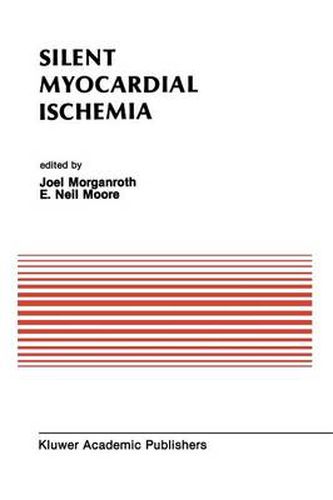Readings Newsletter
Become a Readings Member to make your shopping experience even easier.
Sign in or sign up for free!
You’re not far away from qualifying for FREE standard shipping within Australia
You’ve qualified for FREE standard shipping within Australia
The cart is loading…






This title is printed to order. This book may have been self-published. If so, we cannot guarantee the quality of the content. In the main most books will have gone through the editing process however some may not. We therefore suggest that you be aware of this before ordering this book. If in doubt check either the author or publisher’s details as we are unable to accept any returns unless they are faulty. Please contact us if you have any questions.
Although some investigators have questioned the importance and even the existence of silent myocardial ischemia, documentation presented at this two day symposium leaves little doubt about its existence and importance. It has been estimated that about 3 million of the estimated 4 million angina sufferers in the United states have frequent episodes of silent myocardial ischemia. Although it is not possible to define how many Americans die due to silent ischemia, it has been suggested that the mortality rate may exceed hundreds of thousands of victims annually. Unfortunately, there still remains a lack of definitive information as to why some ischemic events are painless. Some suggest the concept that the location and size of the myocardium at jeopardy relates to pain, that the pain threshold varies from patient to patient or that there are neurological deficits in the myocardium of some patients with silent ischemia. Abnormalities in myocardial perfusion and function can occur without pain. An interesting observation presented by several investigators has been that when a coronary artery is occluded in man, no ischemic pain is perceived for the first 30 seconds. Only after a 30 second period or so of occlusion does angina occur. An even more confusing observation is that some 30 second periods of occlusion of the same vessel in the same patient results in angina while the next occlusion can be a totally silent event.
$9.00 standard shipping within Australia
FREE standard shipping within Australia for orders over $100.00
Express & International shipping calculated at checkout
This title is printed to order. This book may have been self-published. If so, we cannot guarantee the quality of the content. In the main most books will have gone through the editing process however some may not. We therefore suggest that you be aware of this before ordering this book. If in doubt check either the author or publisher’s details as we are unable to accept any returns unless they are faulty. Please contact us if you have any questions.
Although some investigators have questioned the importance and even the existence of silent myocardial ischemia, documentation presented at this two day symposium leaves little doubt about its existence and importance. It has been estimated that about 3 million of the estimated 4 million angina sufferers in the United states have frequent episodes of silent myocardial ischemia. Although it is not possible to define how many Americans die due to silent ischemia, it has been suggested that the mortality rate may exceed hundreds of thousands of victims annually. Unfortunately, there still remains a lack of definitive information as to why some ischemic events are painless. Some suggest the concept that the location and size of the myocardium at jeopardy relates to pain, that the pain threshold varies from patient to patient or that there are neurological deficits in the myocardium of some patients with silent ischemia. Abnormalities in myocardial perfusion and function can occur without pain. An interesting observation presented by several investigators has been that when a coronary artery is occluded in man, no ischemic pain is perceived for the first 30 seconds. Only after a 30 second period or so of occlusion does angina occur. An even more confusing observation is that some 30 second periods of occlusion of the same vessel in the same patient results in angina while the next occlusion can be a totally silent event.